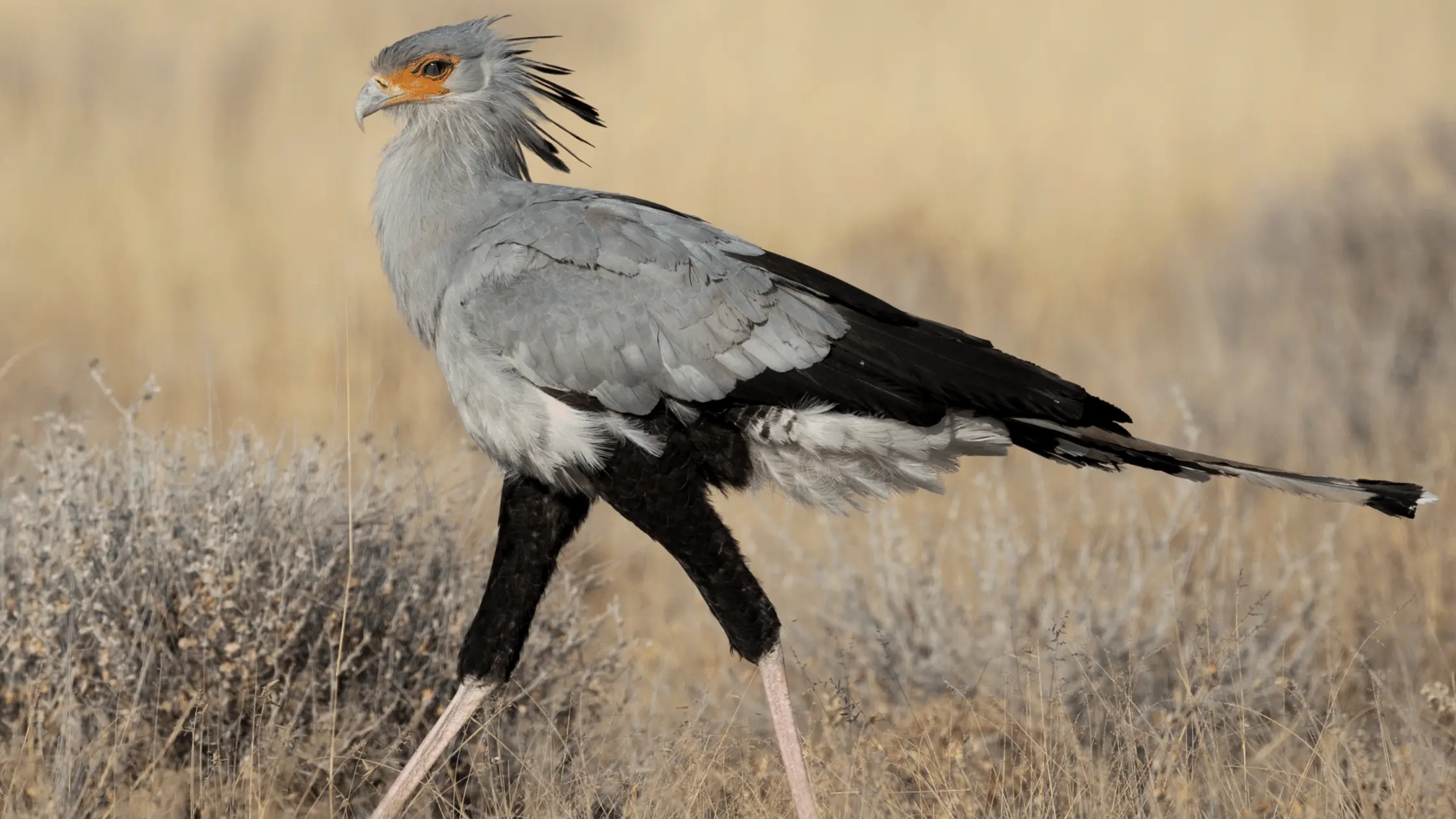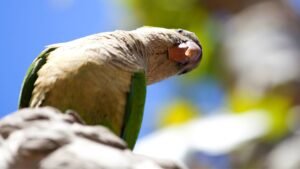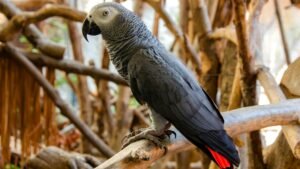When you hear the word secretary bird, you probably imagine a bird with an eyeglass sitting behind a desk and taking calls. But that isn’t what a secretary bird is. A secretary bird is a bird of prey found in the sub-Saharan savannah in Africa. They are easily identified by their long legs, which cause them to stand four feet tall.
The secretary bird primarily moves on foot. Unlike birds of prey such as vultures and buzzards, the secretary bird is mostly on foot and will only fly occasionally. Is there more to this bird? You bet. Read on and find out.
What Are The Species Of The Secretary Bird?
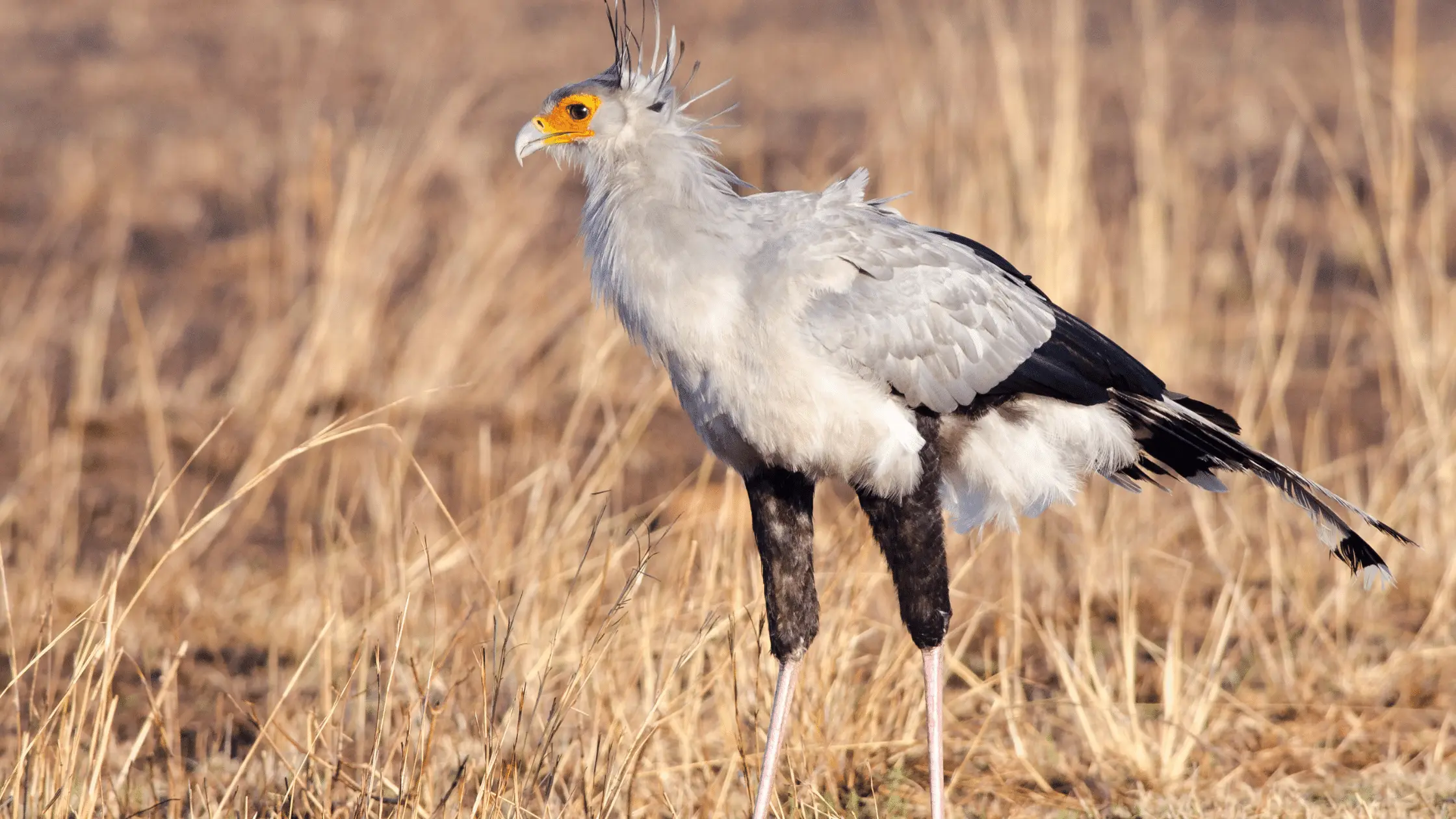
The secretary bird only has one species. They don’t have multiple species like hummingbirds or buzzards. The only species of the secretary bird is the S. Serpentarius.
The S. Serpentarius is found in the open steppes and savannahs of East Africa. The savannah of East Africa is south of the Sahara desert. The secretary bird is frankly strange-looking. They stand four feet tall, which is the height of some very short humans. These birds have long legs with feathers reaching down to their knees.
So, when you see a Secretary bird, you may think they are wearing breeches because of the feathers that reach its knees. The bill of the secretary bird is curved and gray. The brim is edged in yellow and reddish-orange skin. You may be wondering why the secretary bird has such long legs. The answer is simple. Secretary birds use their long legs to stomp their prey to death. The legs also help them to run fast. They are often described as graceful runners. These birds have the longest legs in among bird of prey.
The secretary bird gets their name from 19th-century clerks and secretaries. Clerks wore gray pants and pants that got to their knees. A clerk in the 19th century would also tuck quills behind their ears. The tucking of the quill behind the ears is similar to the coloring of the secretary bird and its head feathers.
Behavior Of Secretary Birds

The secretary bird is especially good at hunting even though they don’t hunt from the skies like most birds of prey. Also, the secretary bird has interesting mating and reproductive behavior. The common behaviors found in this bird will be explained in the following paragraph.
- Prolific Hunters
The secretary bird likes to cruise through grasses using its incredibly long legs. They do this as they look for food. Just before the morning, the secretary bird will drop down from their night roost as they begin the hunt. They like to pair in twos as they keep watch over a territory. The territory of these birds can span as much as 50 square kilometers.
The long legs of these birds aren’t for nothing. Using their long legs, secretary birds cover about 20 miles daily as they look for food. All day, the secretary bird will look for food, only resting occasionally under the shade of a tree. After the day’s hunt, they will return to their nest. They will rise before dawn the next day and begin their routine again.
Other birds of prey, such as buzzards and hawks, usually hunt for their food as they fly. However, the secretary bird and caracaras are the only birds of prey that hunt on foot. The adult secretary bird will work in pairs or small groups as they stalk their prey through the savannah grass. They search for small mammals, large insects, birds, and reptiles.
The secretary bird is notorious for its expertise in catching and killing snakes. Secretary birds are excellent snake catchers; they regularly hunt and kill venomous snakes. Secretary birds will also take advantage of a fire that just went out. They will stalk through the burn site, looking for small animals that couldn’t escape the blaze.
Regarding hunting, the secretary bird is a very good hunter. Well, because they spend a lot of time hunting, it is no surprise how much tact these birds have when hunting.
Still talking about the hunting behavior of the secretary bird, you should know that they like to chase their prey down through the savannah. When they catch up with their prey, they stomp it with their legs. The stomping may kill the prey or stun it enough for the secretary bird to swallow.
When they are hunting snakes, the secretary bird will spread its wings. The wings serve as a distraction for the snake, causing the snake to strike at the outstretched feathers. A bite to the bird’s feathers is safe because no venom will spread to the bird’s body.
- Mating and Reproductive Behavior
The secretary bird mates for life. Like hummingbirds, the secretary bird will do an aerial display when they are trying to win a mate. The males also display mating rituals on the ground. The flight pattern they exhibit during the exhibition is called the “pendulum flight.” This is how the pendulum flight happens; The secretary bird swoops down, then goes up again. They repeat the pattern over and over again.
However, when they are on the ground. The display is quite different. They will dance around each other with outstretched wings. The display they put up is similar to the one found in cranes.
The mating pairs will build their nests together on acacia trees using sticks. Unlike robins that don’t use nests for too long, the secretary bird uses the nest they build for many seasons, modifying it season after season.
The egg that the female secretary bird lays is blue-green. The male secretary bird takes part in incubating the eggs. The eggs hatch after fifty days. This is quite a long period compared to other birds, such as chickens. The male and female secretary bird feeds their babies, feeding them regurgitated prey. The hatchling becomes fully fledged in about three months.
Habitat
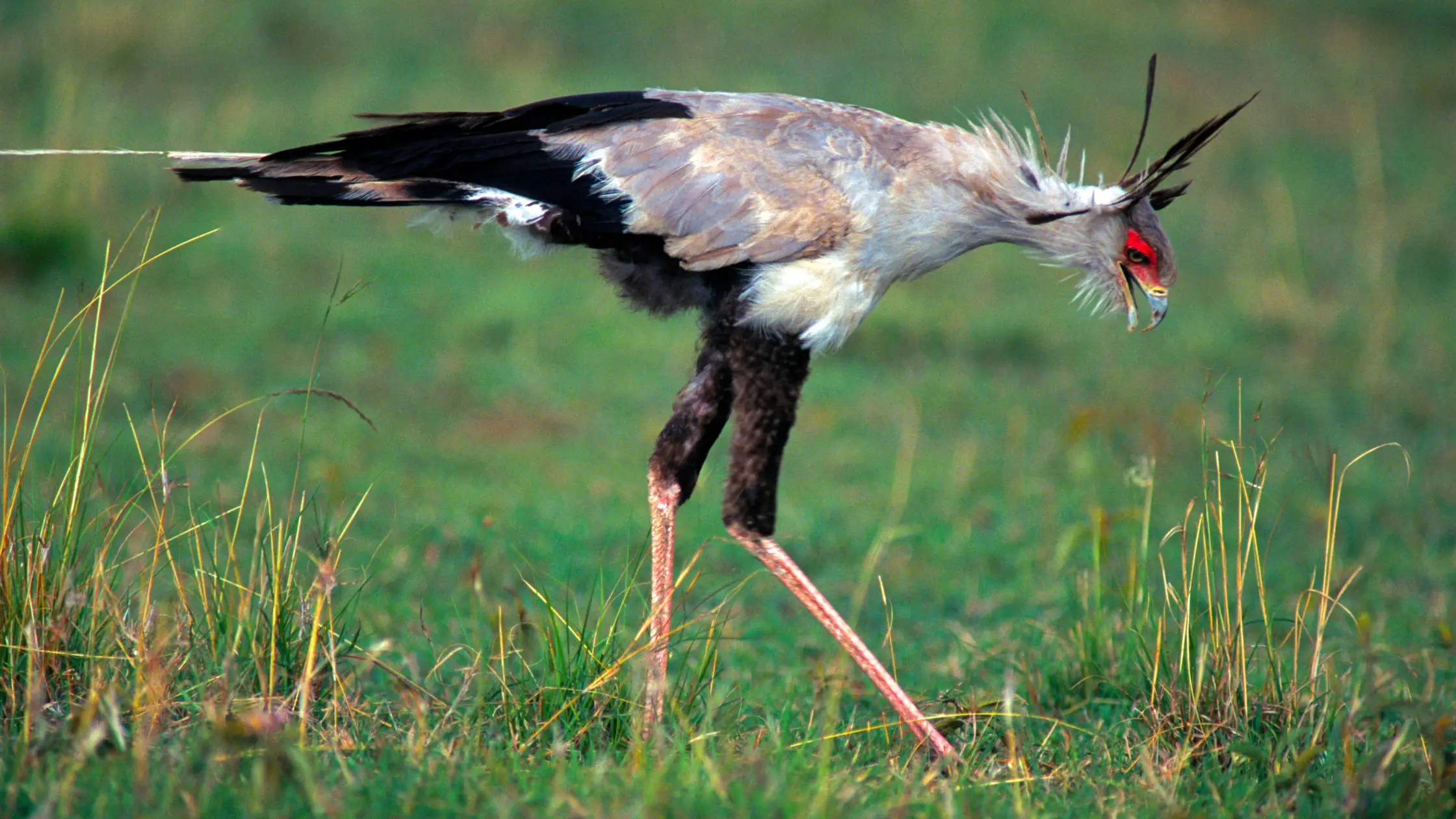
The secretary bird is found in sub-Saharan Africa. Sub-saharan ranges from Senegal to Somalia to the edge of South Africa. The Secretary bird is a bird of the open country. They like to stay in the open country because it allows them enough space to hunt.
They also prefer to live in grasslands, savannahs, and scrubs. Secretary bird’s like to stay in grassland with open patches in woodlands and forests. You may occasionally see them hunting in airfields. The secretary bird will usually avoid hilly habitats. They will also avoid mountainous areas.
Diet
Unlike the hummingbird, which has a specialized diet, the secretary bird will eat anything. They eat mice and hares. They’d eat anything they could catch. They are also not beyond eating other birds too and their eggs.
Secretary birds eat amphibians and invertebrates. They like to add snakes to their diet. These birds are excellent snake killers, regularly catching adders and cobras. They catch their prey with their bill and swallow it whole.
Lifespan
A secretary bird can live up to ten or fifteen years in the wild. However, when these birds are in captivity, they can live up to nineteen to twenty years.

